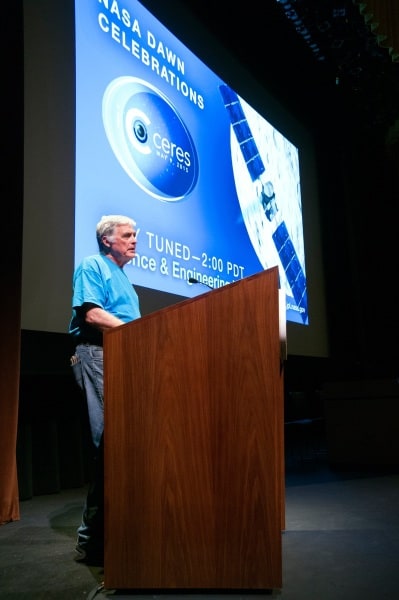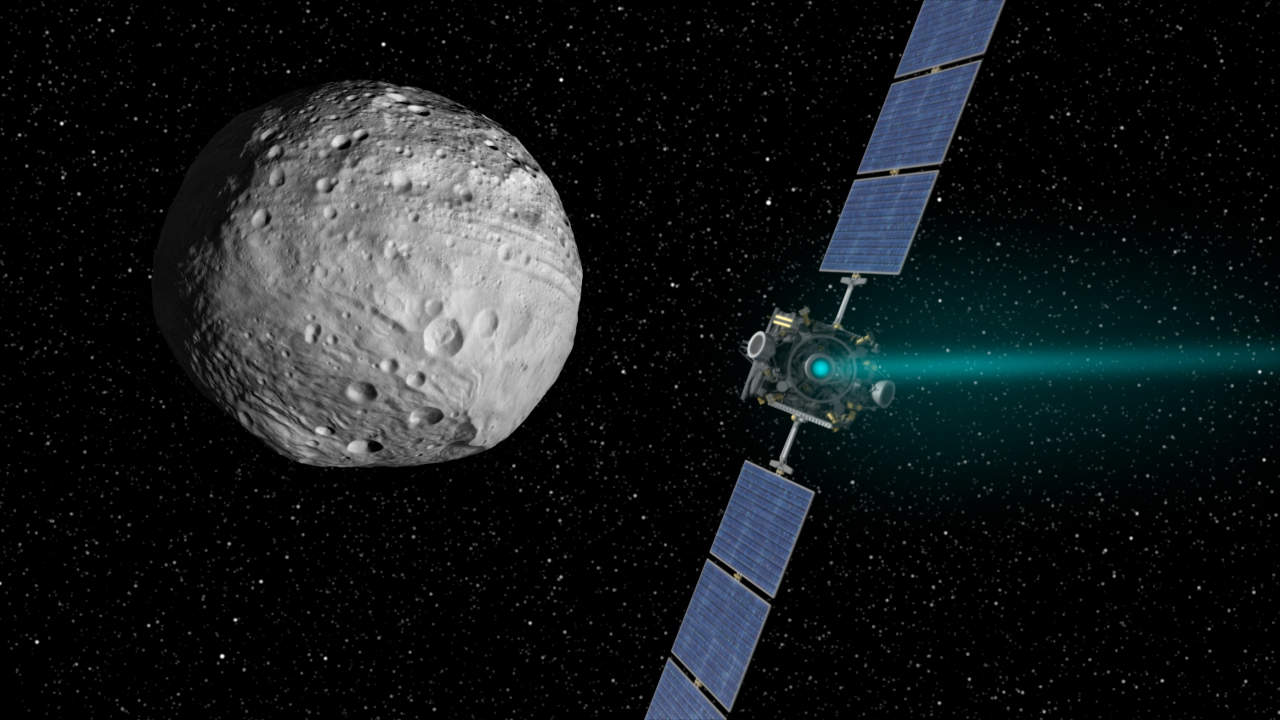Launched in 2007, NASA’s Dawn space probe mission is currently in orbit around the dwarf planet Ceres after successfully completing its study of Vesta. Dawn is the first spacecraft to orbit two extraterrestrial bodies during the same mission, and is providing new insights about the origins of our solar system.
Over the past few months this historic space mission caught the imagination of a group of young Costa Rican English students in the town of Santa Ana, west of San José. In my capacity as their English teacher, I introduced some of my most science-oriented students to the Dawn project, and they began their own research on the mission. It is a particularly natural field of study for young Costa Ricans, given the country’s growing involvement with the aerospace industry: Costa Rica is the birthplace of NASA Hall of Fame astronaut Dr. Franklin Chang, who shares the record for number of space flights (seven), and one of NASA’s top engineers, Sandra Kaufmann, who is the Deputy Project Manager on NASA’s Mars MAVEN mission.
To cap off their project, the students contacted the Dawn team directly to ask them a few questions about scientific aspects of the project and seek some career guidance. What better way to learn about a project than from the people working on it? Dawn Flight Engineer Kristina Larson and Dawn Education and Public Outreach Lead Joe Wise kindly took time out of their busy schedules to correspond with the kids. Here is an excerpt from the exchange.
Valeria Salazar Jiménez, age 15: What benefits will the Dawn mission provide for the world, and what is your favorite part about working for NASA?
Kristina Larson: Dawn is the first spacecraft to orbit two extraterrestrial bodies, as well as the first spacecraft to orbit a dwarf planet. Dawn uses a unique form of propulsion, ion propulsion, which is more than 10 times more efficient as standard chemical propulsion. Dawn used its Framing Camera, Visible and Infrared Spectrometer, and Gamma Ray & Neutron Detector at Vesta to map the topography and composition, and will be doing the same at Ceres. Understanding how these two proto-planets formed gives us clues into the formation of our solar system.
My favorite part is seeing images taken by the spacecraft when they first are downlinked to Earth. I have experienced this with Dawn, with both images of Vesta and Ceres, as well as when I worked on the Opportunity rover. Every day we would see the new images taken the previous day of Mars. It’s so exciting to think that these spacecraft that we build on Earth are traveling far into our solar system and sending us back these current images of alien planets. You never know what you’re going to see when you come to work, and I absolutely love that!

Anthony Callow-Monge, age 16: What made you interested in joining this type of project? What is the work environment like?
KL: I have always loved all things space, whether it was planetary science discoveries or sci-fi shows like Stargate SG-1. This motivated me to pursue an internship at JPL [a branch of NASA] and join the Dawn project. The work environment is awesome! JPL is not for profit; this provides a very different atmosphere from a for-profit company. Everyone is so passionate about the space exploration that we do and everyone is working towards that common goal. Members of Dawn really took the time to teach me space operations and provided a great learning environment.
Edwin Emery, age 13: If humans were sent to Ceres, what would be the fastest travel time to get there?
Joe Wise: This is one of the reasons that there is no talk about establishing a manned station on Ceres. Getting there in a reasonable time is prohibitively expensive. Dawn utilized ion propulsion to make the mission affordable. As an example, the ion engine would accelerate from 0 – 60 mph in about 4 days. It has a very gentle thrust, but it is consistent. The engine is very efficient so that we only use a little fuel for our trip, but the payback is that it takes a very long time to get there.
Anthony Callow-Monge: How far do you think space exploration will have advanced by 2025?
KL: The sky’s the limit! Wait – actually, there is no limit in space. Upcoming missions include the Europa Clipper mission and Mars 2020 (re-fly of MSL). Other projects in the works are the Asteroid Retrieval Mission and even possibly a Mars return mission. By 2025 we should also be much farther down the road in knowing how to take humans farther than the moon. Exciting times!
No one should be surprised if more Costa Ricans in the near future are inspired to assume important roles in the aerospace industry and NASA. For more information on the Dawn project, visit the mission’s website.






